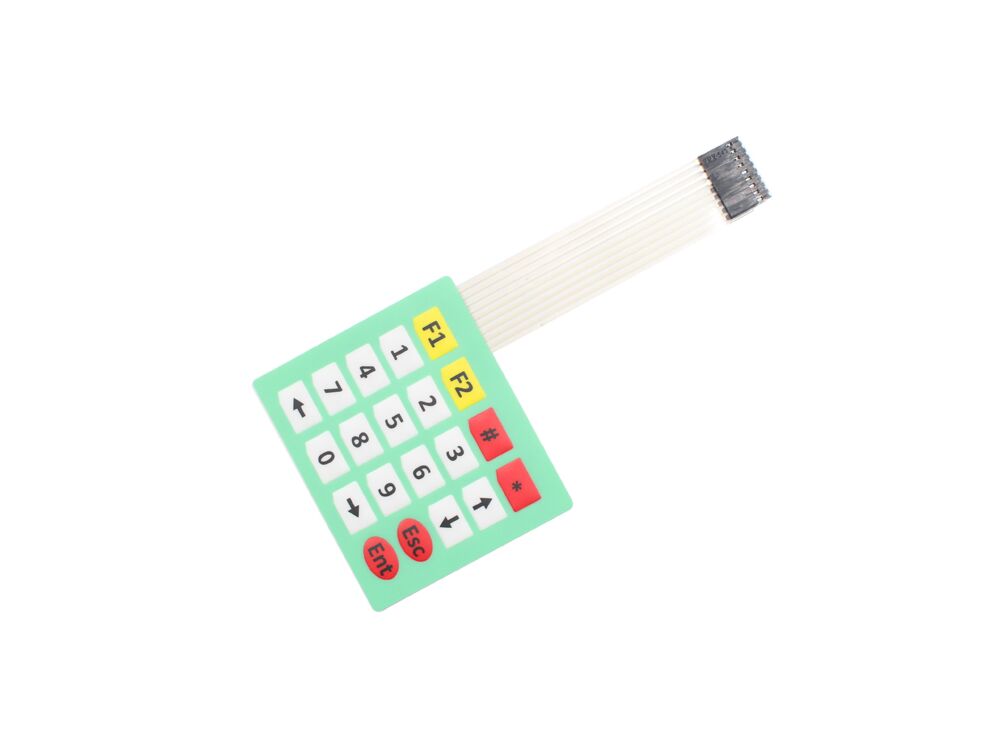Explore the Benefits of Using a Membrane Switch in Modern Devices
Comprehending Membrane Layer Changes: The Trick to Trustworthy and durable Controls

What Are Membrane Switches?
Membrane layer buttons are a sophisticated service in the world of interface innovation, combining performance and layout flawlessly. These gadgets function as a user interface in between customers and electronic systems, incorporating several elements into a small format. Generally created from flexible, slim layers of materials, membrane buttons are designed to reply to touch, allowing customers to engage with machinery and electronic tools properly.
The primary elements of a membrane switch consist of a printed circuit layer, visuals overlay, and a spacer layer that avoids unexpected activation. The visuals overlay can be customized to mirror brand identity or individual choices, improving aesthetics while ensuring use. Membrane buttons are commonly made use of in different applications, consisting of clinical tools, customer electronics, and commercial tools, owing to their sturdiness and resistance to environmental aspects such as wetness and dirt.
Among the vital advantages of membrane layer switches is their ability to withstand damage, making them suitable for high-traffic environments. Additionally, they are lightweight and need very little area, permitting ingenious designs in product growth. In general, membrane switches over stand for a useful and efficient choice for modern-day electronic user interfaces, weding modern technology with user-centric design concepts.
How Membrane Changes Job
The operation of membrane switches joints on a basic yet reliable device that equates individual input right into digital signals. These switches contain numerous layers, generally consisting of a visuals overlay, a spacer layer, and a circuit layer. When a customer presses the button, the top layer flaws, allowing a conductive component in the circuit layer to reach a matching conductive pad on the bottom of the visuals overlay. This contact shuts the circuit and sends out an electronic signal to the gadget, showing that the button has been turned on.
The style of membrane buttons can differ, however they usually incorporate domes or responsive aspects to provide comments to the individual, improving the total experience - membrane switch. The materials utilized in membrane layer switches, such as polyester or polycarbonate, add to their toughness and resistance to ecological variables, including dampness and dust. The published circuits are typically encapsulated, which secures them from wear and tear over time.
Benefits of Membrane Layer Buttons

In addition, membrane layer buttons are recognized for their sturdiness. Created from durable products, they are resistant to dirt, moisture, and physical wear, which significantly prolongs their lifespan contrasted to typical mechanical buttons. This longevity makes them specifically ideal for high-traffic environments and applications calling for longevity.
One more considerable benefit is the ease of cleaning and upkeep. The smooth surface area of membrane layer changes reduces dust accumulation and is often unsusceptible spills, making them perfect for settings that call for regular sanitization.
Furthermore, membrane buttons use a structured profile, leading to a thinner layout that can be integrated into numerous gadgets without adding mass. This function not only boosts the visual appeal yet additionally adds to a more ergonomic item style.
Applications of Membrane Buttons
Flexible and user-friendly, membrane buttons discover applications across a vast variety of industries, consisting of medical tools, consumer electronics, and commercial equipment. In the clinical field, these buttons are important to devices such as analysis equipment, person tracking systems, and get more mixture pumps, where dependability and convenience of cleaning are critical. Their capability to keep and endure rough atmospheres capability makes them perfect for such applications.

In consumer electronic devices, membrane layer switches are utilized in items like microwaves, cleaning devices, and remote controls - membrane switch. Their smooth layout allows for user-friendly customer interfaces, boosting the overall individual experience while giving longevity and resistance to tear and use
Commercial equipment additionally gains from membrane switches, especially in control panels for equipment and automation systems. These switches provide security against dirt and dampness, guaranteeing constant performance in difficult settings. Furthermore, their personalized attributes permit manufacturers to tailor them to specific operational needs, enhancing efficiency and functionality.
Selecting the Right Membrane Switch
When selecting a membrane layer button, it is crucial to take into consideration numerous aspects that influence performance and suitability for details applications. The key considerations include ecological problems, tactile feedback, durability, and layout requirements.
First, analyze the operating atmosphere; switches exposed to dampness, chemicals, or extreme temperatures call for certain materials to make certain durability and functionality. Next off, examine the need for responsive comments. Depending on customer interaction, some applications might take advantage of a tactile response to validate activation, while others may prefer a This Site non-tactile layout for visual reasons.
Longevity is one more critical variable; membrane buttons must be developed to withstand constant use, influences, and abrasion. Guarantee the picked switch can sustain the expected lifecycle, specifically in high-usage situations.

Final Thought
To conclude, membrane changes act as necessary elements in the layout of long lasting and trustworthy control systems throughout various industries. Their portable style, combined with durable construction and personalized features, boosts user communication while guaranteeing durability popular settings. The adaptability of membrane changes permits for tailored remedies that meet details operational demands, reinforcing their relevance in modern-day technology. As markets remain to develop, the relevance of integrating efficient membrane layer button solutions can not be overemphasized.
Membrane layer switches over stand for an essential aspect of modern interface design, blending functionality with resilience in various applications.Membrane switches are a sophisticated solution in the world of customer interface modern technology, combining functionality and layout seamlessly. Typically constructed from flexible, slim layers of products, membrane layer switches are developed to respond to touch, enabling users to connect with equipment and digital gadgets efficiently.
The design of membrane layer buttons can differ, however they frequently incorporate domes or responsive components to supply comments to the user, enhancing the total experience.In final thought, membrane switches offer as necessary elements in the design of trusted and long lasting control systems across various sectors.